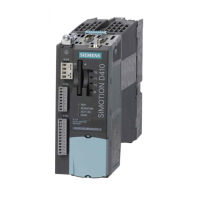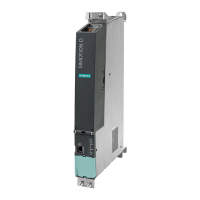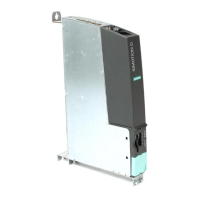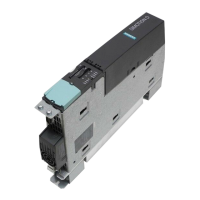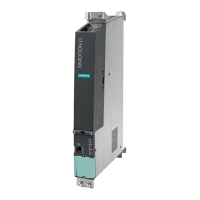Commissioning (hardware)
4.3 User memory concept
SIMOTION D4x5-2
96 Commissioning and Hardware Installation Manual, 02/2012
Backing up non-volatile SIMOTION data
You have the following options for backing up non-volatile SIMOTION data on the
CompactFlash card:
● In the user program:
With the _savePersistentMemoryData system function, the user program can back up the
non-volatile SIMOTION data content to the CompactFlash card. This ensures that the
retain variables and the absolute encoder position are backed up in the event that a
spare part is used. The contents are saved to the "PMEMORY.XML" backup file in the
"USER\SIMOTION" directory.
● Via switch/button (Service selector switch or DIAG button of the SIMOTION D4x5-2) or
IT DIAG. See Section Diagnostic data and non-volatil
e SIMOTION data (Page 359). The
contents are saved to the "PMEMORY.XML" backup file in the
"USER\SIMOTION\HMI\SYSLOG\DIAG" directory.
On the system side, this system function ensures that a consistent overall image of the non-
volatile SIMOTION data is always available the next time the unit is switched on, even if
there is a power failure during backup. An already existing backup file is renamed to
"PMEMORY.BAK" before a new backup file is generated. If the save operation to the new
backup file fails (e.g. because the capacity of the CompactFlash card is insufficient), this
backup copy of the backup file is used the next time an attempt is made to restore the non-
volatile SIMOTION data content. If the new file is successfully created, the backup copy of
the backup file is deleted.
NOTICE
Non-volatile SIMOTION data that is not backed up to the CompactFlash card will be lost if a
spare part is installed (in the event of a module defect). For example, failing to back up the
current values of the retain variables will result in them being lost and reset to their initial
values.
If an absolute encoder overflow occurs after _savePersistentMemoryData, the actual
position value is no longer correct after the non-volatile SIMOTION data is restored. In this
case, homing (absolute encoder adjustment) must be repeated.
With the SCOUT functions "Save variables" and "Restore variables", you also have the
option of backing up to your PC and restoring data that was changed during operation and
only stored in the runtime system.

